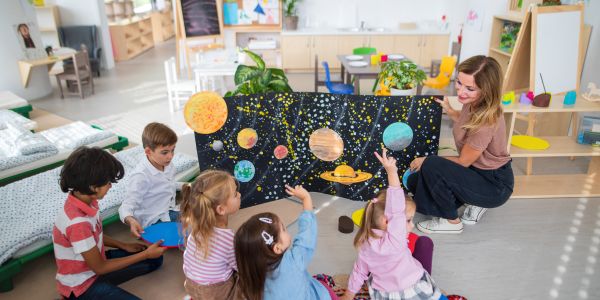Creating a Welcoming Learning Environment for Language Learners

Learning a new language can be an intimidating and stressful experience. As a teacher or organizer of language learning events and classes, it’s important to create an environment that makes learners feel comfortable, motivated and engaged.
Here are some tips for making your language learning space welcoming for all.
Set a Friendly Tone from the Start
First impressions matter. From the moment learners walk in the door, your words, actions and attitude can set the tone for the learning experience.
Some ways to establish a warm and welcoming tone:
- Greet each person – a simple “Hello!” and a smile as they arrive can make people feel seen and cared for. Use their name if you know it.
- Introduce yourself – let learners know who you are and what your role is. Explain what will happen during the class or event.
- Learn and use learners’ names – this shows you care about getting to know each person as an individual.
- Speak slowly and clearly – this helps lower anxiety and aids comprehension.
- Be patient and understanding – learning a language is hard! Reassure learners that mistakes are part of the process.
- Use warm, inclusive language – say “we” and “us” instead of “you.” This promotes a sense of community.
- Be enthusiastic and encouraging – your passion for language learning is contagious!
Additional tips:
- Play soft music as learners arrive and mingle
- Offer refreshments if possible
- Smile frequently and make eye contact
- Keep the atmosphere light with humor when appropriate
Design an Inclusive Physical Environment
The physical setup of your learning space can impact the student experience. Strive to create an environment that is accessible, comfortable and sets learners up for success.
Make the space accessible:
- Hold classes and events in locations accessible by public transportation, walking, or wheelchairs when possible
- Rearrange furniture and seating to accommodate those with mobility issues
- Provide written materials in large print or braille if needed
Make the space comfortable:
- Use comfortable, supportive chairs. Avoid hard plastic chairs if possible.
- Reduce outside noise and distractions as much as possible
- Adjust lighting and temperature to maintain reasonable comfort
- Periodically take “fresh air” breaks to stretch and re-energize
Set up the space to optimize learning:
- Arrange seating in a semi-circle to promote interaction
- Cluster seating around whiteboards or projector screens
- Provide a good view of instructor and learning aids from all seats
- Leave open spaces for activities, mingling, and small group work
- Display motivational posters, student work, etc. to create a lively, engaging environment
Foster an Encouraging Classroom Culture
The classroom culture you co-create with your learners can empower them to take risks, grow their skills, and support one another.
Promote a “growth mindset” culture:
- Praise effort and perseverance more than innate talent
- Avoid labeling some students as “smart” and others not
- Encourage learners to embrace challenges and mistakes as opportunities to improve
Build an encouraging peer culture:
- Place learners in small groups to get to know each other
- Facilitate icebreakers and team-building activities
- Teach phrases for supporting one another, like “You can do it!”
- Encourage applause or snapping for others’ successes
- Use peer editing and tutoring to build collaboration
Be a role model of encouragement:
- Give specific, positive feedback frequently
- Redirect mistakes gently and tactfully
- Share stories of your own language learning struggles and successes
- Check in with students who seem discouraged or disengaged
- Celebrate group and individual progress and milestones
Make Learning Relevant and Meaningful
Adult language learners especially thrive when the material resonates with their lives and goals. Find ways to tailor instruction to your learners’ interests, needs, and motivations.
Get to know your learners:
- Have students complete interest surveys or pre-assessments
- Incorporate icebreakers and activities for sharing backgrounds, hobbies, motivations, etc.
- Ask about their language goals – travel? career? connecting with family?
Make teaching relevant:
- Relate grammar and new words to common real-life situations
- Use authentic materials – newspaper articles, menus, TV clips, etc.
- Assign projects around personal interests – cooking a dish and presenting on it, visiting a cultural festival or neighborhood, etc.
- Role play common social exchanges – at the market, making appointments, asking directions, etc.
Promote intrinsic motivation:
- Encourage learners to create individual language learning plans and goals
- Allow choices in activities and assignments when possible
- Make space for creativity – writing, art, drama, music, etc.
- Share stories of language learning successes from past students
Build Community Among Learners
Learning alongside supportive peers provides built-in motivation and enrichment. Intentionally cultivating bonds between learners makes the experience more engaging and meaningful.
Facilitate relationship building:
- Design icebreakers focused on common interests and experiences
- Create regular small group work, discussions, and collaborative projects
- Schedule joint learner presentations, talent shows, or other interactive activities
- Organize field trips to immerse learners in the language and culture together
Enable community networking:
- Set up social media groups, chats, or forums for students to interact outside class
- Host conversation clubs or informal get-togethers for students to practice together
- Share contact info for students to reach out for tutoring or advice
- Suggest or facilitate language partners or tandem learning exchanges
Build multi-level community:
- Invite past students to share success stories or give presentations
- Arrange for advanced students to tutor beginning students
- Mix language levels in small groups or partners to encourage learning from each other
Promote Diversity and Inclusion
Language learners come from many different cultural backgrounds, learning styles, skill levels, and life experiences. An inclusive environment values and bridges these differences.
Learn about students’ diverse backgrounds:
- Get to know learners’ languages, cultural traditions, immigration experiences, etc.
- Note different learning styles – visual, kinetic, auditory, etc.
- Be aware of literacy levels, access to technology, and other factors impacting learning
Adapt teaching methods:
- Incorporate visuals, gestures, and role playing to reach diverse learning styles
- Customize pacing and complexity for different skill levels
- Repeat key information in multiple modes – written, spoken, visual, etc.
- Check often for comprehension and adjust as needed
Respect and value all cultures:
- Encourage students to share diverse cultural perspectives and traditions
- Avoid stereotyping or tokenizing students
- Use inclusive language – acknowledge diverse families, relationships, experiences, etc.
- Shut down hurtful comments or jokes about cultural differences
- Address tensions respectfully – use them as teachable moments
Support Students’ Mental Health
Language learning brings ups many emotions. Anxiety, frustration, embarrassment and discouragement are common. A caring, responsive environment can help learners manage the ups and downs.
Reduce language anxiety:
- Don’t force students to speak before they are ready
- Encourage practice speaking in low-pressure settings first – one-on-one or in small groups
- Allow novice learners to speak without constant error correction
- Share stories of your own language learning nerves to normalize anxiety
Watch for frustration and prevent burnout:
- Check in with students who seem withdrawn or overwhelmed
- Suggest a brief break or switch to a fun warm-up activity to reset the brain
- Adjust the pace or complexity level if most students are frustrated
- Remind learners that plateaus are normal and part of progression
Handle mistakes and embarrassment with care:
- Gently rephrase or repeat a correction – no need to draw extra attention
- Avoid negative phrasing – say “try this…” instead of “no, that’s wrong”
- Smile reassuringly if a student seems flustered and let them reset
- Remind students we all make many mistakes when learning languages
Provide encouragement and community support:
- Celebrate milestone achievements to mark progress
- Share exemplary student work (with permission) as models
- Facilitate study groups or peer support networks
- Remind students of how far they’ve come to boost motivation
Make Classes Engaging and Fun
Joy, humor, and playfulness can go a long way in language learning. Brains learn best when engaged and happy! Aim for a light atmosphere alongside the hard work.
Incorporate engaging activities:
- Use interactive technology tools like Quizlet, Kahoot, or FluentKey
- Play language learning games like charades, Bingo, or Pictionary
- Do improv or role play real-world scenarios
- Use creative projects like posters, songs, or videos
Mix in some friendly competition:
- Have students do timed challenges individually or in teams
- Award prizes or recognition for participation and victories
- Organize end-of-unit contests or performances
- Display leaderboards (but keep it positive and optional)
Leverage humor when appropriate:
- Show funny media examples related to the language
- Laugh together at silly language mix-ups and “punny” jokes
- Smile and keep the energy upbeat through mistakes or struggles
- Meme yourself – don’t take mistakes too seriously!
Have fun field trips:
- Visit ethnic markets, restaurants, cultural events, etc. together
- Assign creative missions at target language destinations
- Expose students to native speakers in everyday environments
- Make space for chatter and bonding during excursions
Support Learners Outside of Class
Learning continues long after class ends. Providing reminders, resources and encouragement between sessions helps students stick with the language.
Send regular check-ins and tips:
- Email vocabulary reviews, articles, and language learning game links
- Share updates on community events, conferences, or other opportunities
- Send progress report check-ins and kudos on completed assignments
Make yourself available for questions:
- Provide contact info for students to get help between classes
- Set up office hours or allow for questions during breaks
- Respond promptly to queries via email, chat, or learning portals
Develop take-home assignments:
- Personalize homework to reinforce each student’s weaknesses
- Suggest real-world opportunities for practice – journaling, TV shows, events, etc.
- Connect advanced students with conversation partners and tutoring opportunities
Direct students to outside resources:
- Share language learning apps, websites, and media channels
- Show how to access classes at local colleges, libraries, or community centers
- List cultural centers, activism groups, and volunteer options to stay engaged
- Provide info on meetups, exchanges, mentorships and other immersion opportunities
Celebrate and Validate Progress
Marking milestones along the language learning journey can keep motivation high. Validate students’ effort and growth.
Track and showcase progress:
- Maintain individual student learning profiles and portfolios
- Display student work or accomplishment “walls of fame”
- Create certificates of completion for levels or achievements
Celebrate milestones together:
- Lead a round of applause for students who passed exams or hit targets
- Organize potlucks or parties at key points like end of term or before breaks
- Award prizes or special honors to top students
Validate effort and perseverance:
- Send personalized notes or emails recognizing diligent practice
- Verbally praise grit, courage and hard work – not just innate talent
- Remind students how much they have accomplished since beginning
- Encourage native and bilingual speakers too – it’s hard work for all!
Listen and Improve
The best way to create an optimal environment is to keep getting feedback from learners. Listen to their needs and continue adapting.
Collect student insights:
- Hand out anonymous survey forms to suggest improvements
- Hold end-of-term focus groups to capture experiences
- Look for trends in course evaluations about what is working or not working
Solicit informal feedback:
- Have a suggestion box for students to submit ideas anytime
- Chat with students before and after class about how things are going
- Pay attention to facial expressions and energy levels as barometers
Adapt based on feedback:
- Review curriculum and pacing – adjust as needed
- Change up groupings or partners if dynamics aren’t gelling
- Address repetitive comments and concerns
- Experiment with new activities, tools, formats, etc. suggested by students
Close the feedback loop:
- Let students know when changes are being made based on feedback
- Provide updates on new initiatives, resources, and improvements underway
- Thank students for sharing their perspectives
- Ask follow-up questions to gauge if changes are working
Conclusion
Creating a supportive, student-centered environment takes intention and effort, but it pays back tenfold in engaged, motivated learners.
The strategies above can help you foster an inclusive atmosphere where all students feel comfortable, inspired to succeed, and connected to a language learning community.
Small consistent actions like learning names, validating progress, adapting materials for relevance, and having fun go a long way.
Keep listening and improving based on regular feedback. When both instructors and students do their part, amazing language learning is possible!















